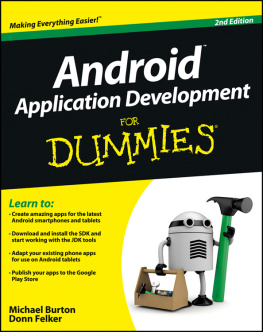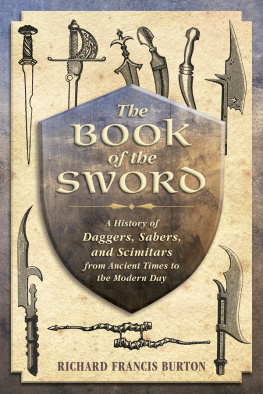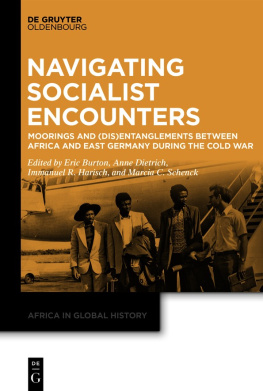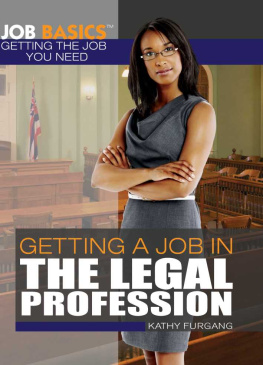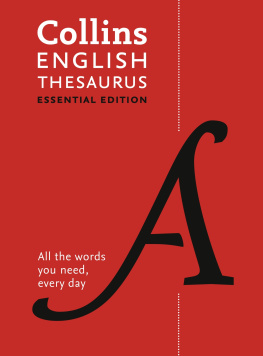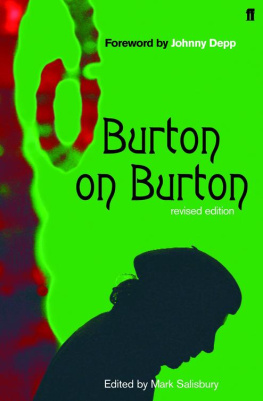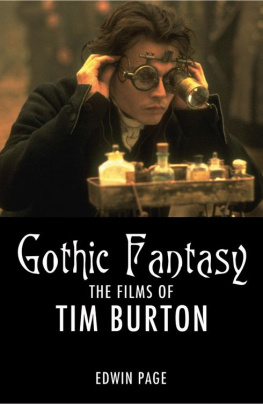
Copyright 2013 by William C. Burton. All rights reserved. Except as permitted under the United States Copyright Act of 1976, no part of this publication may be reproduced or distributed in any form or by any means, or stored in a data base or retrieval system, without the prior written permission of the publisher.
ISBN: 978-0-07-181882-7
MHID: 0-07-181882-0
The material in this eBook also appears in the print version of this title: ISBN: 978-0-07-181881-0, MHID: 0-07-181881-2.
E-book conversion by codeMantra
Version 2.0
All trademarks are trademarks of their respective owners. Rather than put a trademark symbol after every occurrence of a trademarked name, we use names in an editorial fashion only, and to the benefit of the trademark owner, with no intention of infringement of the trademark. Where such designations appear in this book, they have been printed with initial caps.
McGraw-Hill Education books are available at special quantity discounts to use as premiums and sales promotions or for use in corporate training programs. To contact a representative, please visit the Contact Us page at www.mhprofessional.com.
TERMS OF USE
This is a copyrighted work and McGraw-Hill Education and its licensors reserve all rights in and to the work. Use of this work is subject to these terms. Except as permitted under the Copyright Act of 1976 and the right to store and retrieve one copy of the work, you may not decompile, disassemble, reverse engineer, reproduce, modify, create derivative works based upon, transmit, distribute, disseminate, sell, publish or sublicense the work or any part of it without McGraw-Hill Educations prior consent. You may use the work for your own noncommercial and personal use; any other use of the work is strictly prohibited. Your right to use the work may be terminated if you fail to comply with these terms.
THE WORK IS PROVIDED AS IS. McGRAW-HILL EDUCATION AND ITS LICENSORS MAKE NO GUARANTEES OR WARRANTIES AS TO THE ACCURACY, ADEQUACY OR COMPLETENESS OF OR RESULTS TO BE OBTAINED FROM USING THE WORK, INCLUDING ANY INFORMATION THAT CAN BE ACCESSED THROUGH THE WORK VIA HYPERLINK OR OTHERWISE, AND EXPRESSLY DISCLAIM ANY WARRANTY, EXPRESS OR IMPLIED, INCLUDING BUT NOT LIMITED TO IMPLIED WARRANTIES OF MERCHANTABILITY OR FITNESS FOR A PARTICULAR PURPOSE. McGraw-Hill Education and its licensors do not warrant or guarantee that the functions contained in the work will meet your requirements or that its operation will be uninterrupted or error free. Neither McGraw-Hill Education nor its licensors shall be liable to you or anyone else for any inaccuracy, error or omission, regardless of cause, in the work or for any damages resulting therefrom. McGraw-Hill Education has no responsibility for the content of any information accessed through the work. Under no circumstances shall McGraw-Hill Education and/or its licensors be liable for any indirect, incidental, special, punitive, consequential or similar damages that result from the use of or inability to use the work, even if any of them has been advised of the possibility of such damages. This limitation of liability shall apply to any claim or cause whatsoever whether such claim or cause arises in contract, tort or otherwise.
EDITORIAL STAFF
Thirty-fifth Anniversary/Fifth Edition
by
William C. Burton, Esq.
Author
Brian Burton, Esq.
Editor
Carina Finn
Assistant Editor
Executive Assistant
Jenise Hayes
Assistants
Vanita Vishnubhakat
Harold L. Harris
FIRST EDITION
Stephen C. DeCosta
Editor
Michal Hoschander Malen
Associate Editor
EDITORIAL BOARD
Legal Editorial Consultant
Joan Gudesblatt
Editorial Consultants
Barbara Wiberg Alverson Arlene Rogat
Editorial Assistant
Yvonne Antokas Montesantos
Compilation Editors
Dorit King Ethel Jane Osterman Camille Capobianco Taranto
Assistants
Karen Dritto Ronald M. Malen Michele M. Mandelbaum
WILLIAM C. BURTON, Esq., is an attorney and a partner in the law
firm of Sagat|Burton LLP. He is a former New York State Assistant
Attorney General and a former New York State Assistant Special
Prosecutor. As a writer, he compiled this book, which became the first
legal thesaurus ever written for the legal profession. When the book
was released, it was recognized as One of the Most Innovative and
Creative Projects of the Year by the Association of American
Publishers. Two decades later, he established The Burton Awards
program, which rewards the finest achievements in law, including
legal writing. The program is run in association with the Library of
Congress. In 2011, Mr. Burton was presented the highest honor given
by the second-largest association of law professors in America, The
Legal Writing Institute. At that time, he was recognized for
significantly advancing the cause of legal writing in the profession of
law. More recently, he was awarded the Blackstone Award by the
Friends of the Law Library of Congress for embodying and promoting
the best ideals of the institution.
CONTENTS
The First and Most Comprehensive Legal Thesaurus of Its Kind
FOREWORD
In the legal community absolute understanding is the measure of perfection. Perfection in the realm of the courts is the just resolution of issues of fact and questions of law. The primary tool for resolving conflicts among civilized people is through communication by written and oral language. The root of all language is the individual word.
In the English language, each word may have several meanings. Often, it is the use of a specific word or term upon which a case or controversy may hinge. Only by using precise language can the waters remain clear and unmuddied allowing justice to take its course unfettered by those who would mislead or misrepresent.
It is through the use of such a tool as the Legal Thesaurus that one may find the precise term to fit the nuances of a particular situation. It may be too much to expect such a tool to eradicate the confusion between scienter and malice. The difference between no law and no unreasonable law may also be beyond its scope. But it should clearly demonstrate that all deliberate speed is not synonymous with as slowly as feasible.
WILLIAM O. DOUGLAS
Justice, U.S. Supreme Court
19391975
OCTOBER 22, 1979
Editors Note: Justice Douglas served for over 36 years on the Supreme Court, which is the longest term in the history of the U.S. Supreme Court. This foreword is now recorded as one of his last writings.
INTRODUCTION
Before the publication of this book, lawyers and legal writers did not have their own thesaurus to assist them as they wrote their memoranda, motions, pleadings, articles, and communications. This book was compiled specifically to address that need and to provide lawyers and legal journalists with a reference tool to find all the words to fit a thought. Through its use, the goal is to reduce ambiguities and redundancies, replacing them with clear, concise, and plain language.
The fifth edition adds many new and contemporary words that augment the previous versions of the book. It also includes many words and expressions that lawyers use frequently as they practice their profession. It even includes concepts that are examined by the highest appellate courts in the nation.
Next page




